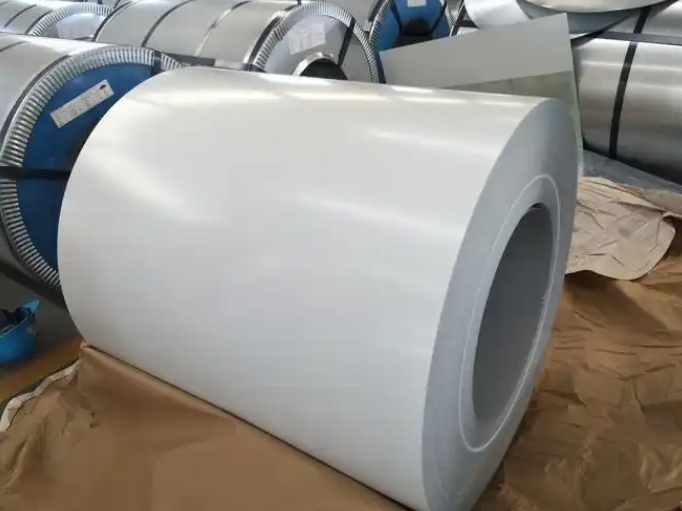PPGL Color Coated Coil: Weatherproof & Cost-Effective
In modern construction and manufacturing, materials that offer both durability and aesthetic appeal are highly sought after. One such material is the PPGL Color Coated Coil. Combining the strength of steel with protective coatings, PPGL coils are designed to withstand harsh environments while providing a visually pleasing finish.
Understanding PPGL Color Coated Coils
What is PPGL?
PPGL stands for Pre-Painted Galvalume, which involves coating a galvalume steel substrate with multiple layers of paint. This process enhances the steel's resistance to corrosion and extends its lifespan.
Composition and Benefits
The typical composition includes:
-
Base Material: Hot-dip galvalume steel.
-
Coating Layers: Primer, topcoat, and backcoat.
-
Paint Types: Polyester (PE), Silicone Modified Polyester (SMP), High Durability Polyester (HDP), and Polyvinylidene Fluoride (PVDF).
These coatings provide:
-
Enhanced Corrosion Resistance: Protects against rust and degradation.
-
UV Resistance: Maintains color and gloss over time.
-
Aesthetic Appeal: Available in various colors and finishes.
Weatherproof Capabilities
Corrosion Resistance
PPGL coils exhibit superior corrosion resistance due to the aluminum-zinc alloy coating. This layer acts as a barrier, preventing moisture and oxygen from reaching the steel substrate.
UV and Heat Resistance
The paint systems used in PPGL coils are formulated to resist UV radiation, reducing color fading and chalking. Additionally, the coatings can withstand high temperatures, making them suitable for various climates.
Real-World Application
In coastal areas, where salt-laden air accelerates corrosion, PPGL coils have demonstrated remarkable durability. For instance, structures utilizing PPGL roofing have shown minimal signs of rust even after a decade of exposure.
Cost-Effectiveness
Long-Term Savings
While the initial cost of PPGL coils may be higher than uncoated steel, the long-term savings are significant. Reduced maintenance, longer service life, and fewer replacements contribute to overall cost-effectiveness.
Versatility in Applications
PPGL coils are used in various sectors:
-
Construction: Roofing, wall panels, and facades.
-
Appliances: Refrigerator and washing machine panels.
-
Automotive: Body panels and trims.
Case Study
A manufacturing facility in a tropical region replaced its traditional roofing with PPGL-coated panels. Over five years, maintenance costs dropped by 40%, and the facility reported improved thermal regulation.
Comparison: PPGL vs. PPGI
| Feature | PPGL (Pre-Painted Galvalume) | PPGI (Pre-Painted Galvanized) |
|---|---|---|
| Base Material | Galvalume (Al-Zn alloy) | Galvanized (Zn coating) |
| Corrosion Resistance | Superior | Moderate |
| Heat Resistance | Higher | Lower |
| Lifespan | Longer | Shorter |
| Cost | Slightly Higher | Lower |
Source: Zhongxi Metals
Installation Guide: Steps for Optimal Performance
-
Surface Preparation: Ensure the substrate is clean and free from contaminants.
-
Handling: Use protective gloves to prevent oil or dirt transfer.
-
Cutting: Employ appropriate tools to avoid damaging the coating.
-
Fastening: Use compatible fasteners to prevent galvanic corrosion.
-
Maintenance: Regularly inspect and clean surfaces to prolong lifespan.
⚠️ Common Misconceptions
-
"PPGL is only for roofing."
While popular in roofing, PPGL's versatility extends to walls, appliances, and vehicles -
"All PPGL coils are the same."
Quality varies based on base material, coating thickness, and paint type -
"PPGL doesn't require maintenance."
Though low-maintenance, periodic inspections ensure longevity.
Personal Experience
During a renovation project, I opted for PPGL-coated panels for the exterior cladding. Not only did the building achieve a modern aesthetic, but the material's resilience to tropical weather conditions exceeded expectations. Years later, the panels remain vibrant and intact.
Final Checklist
-
Select appropriate coating based on environment.
-
Ensure proper storage to prevent damage.
-
Follow manufacturer guidelines during installation.
-
Schedule regular inspections.
-
Clean surfaces as needed to maintain appearance.












